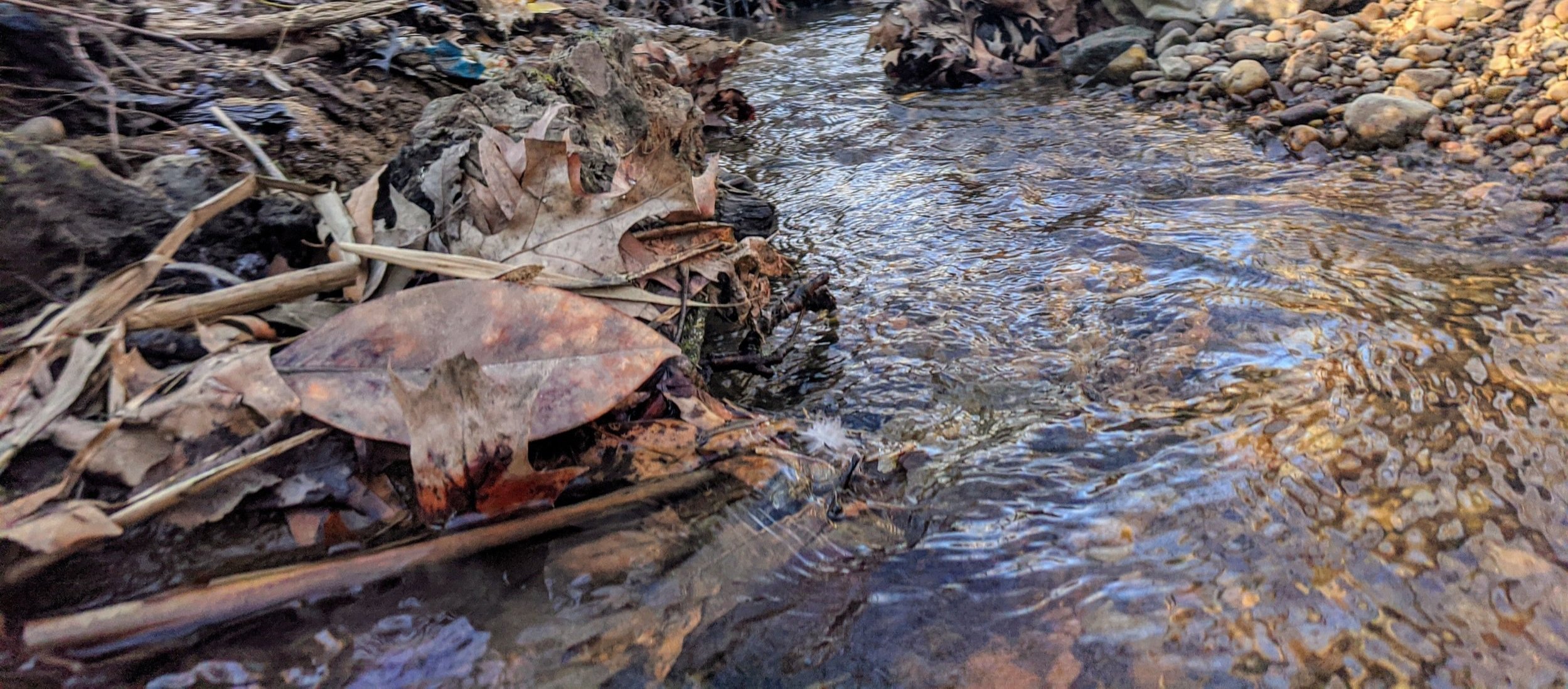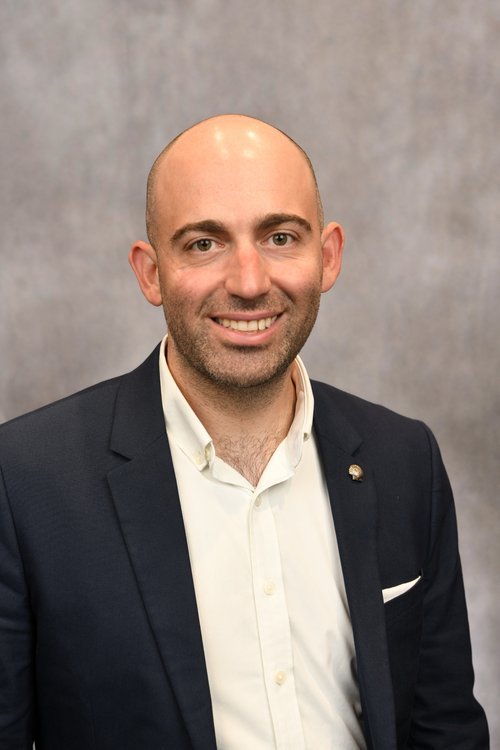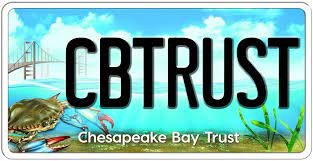
The AnthroHydro research group at Catholic University focuses on the interface between humans and water. The lab solves problems on topics like microplastic transport, green infrastructure, and increasing diversity in STEM.
Meet the Team
-

Dr. Jason Davison
Lab Director
-

Grace Pooley
PhD Student
-

Wesley Garnes
Undergraduate Student
-

Ellen O'Brien
Undergraduate Student
Research Projects
Plastic Waste Modeling
The lab group is creating a new numerical model to find the source location of plastic waste. Currently, the method is being applied to Sligo Creek in Montgomery County, MD. Funding provided by the Chesapeake Bay Trust and Montgomery County.
Research and Innovative STEM Education (RAISE)
The RAISE program fundamentally concentrates on STEM Education for students in the Washington DC Metropolitan region, with the explicit goal of educating students from a diverse background, socioeconomic class, and marginalized communities. RAISE is funded by the Office of Naval Research as part of their Science, Technology, Engineering and Mathematics (STEM) Program.
Plastic Computer Vision
The AnthroHydro team is developing a plastic waste counting software for rivers and streams. The beta version of the software was presented at the American Geophysical Union Fall meeting. A complete fully featured package will be released in April 2023.
Lab Publications
Papers
Bharat Sharma Acharya, Bulbul Ahmmed, Yunxiang Chen, Jason H Davison, Lauren Haygood, Robert T Hensley, Rakesh Kumar, Jory Lerback, Haojie Liu, Sushant Mehan, Mohamed Mehana, Sopan D Patil, Bhaleka D Persaud, Pamela L Sullivan, Dawn URycki, 2022, Hydrological perspectives on integrated, coordinated, open, networked (ICON) science, Earth and Space Science. https://doi.org/10.1029/2022EA002320
Xu S., S.K. Frey, A. R. Erler, O. Khader, S. J. Berg, H-T. Hwang, M. V. Callaghan, J. H. Davison, E. A. Sudicky, 2019, Investigating Groundwater-Lake Interactions and Seasonal Cycles for the Laurentian Great Lakes with a Fully-Integrated Surface Water-Groundwater Model Water Resources Research. https://doi.org/10.1016/j.jhydrol.2020.125911
Chen, J., E. A. Sudicky, J. H. Davison, S. K. Frey, Y. J. Park, H. Hwang, A.R. Erler, S.J. Berg, M.V. Callaghan, K. Miller, M. Ross, and R. Peltier, 2019, Towards a climate-driven simulation of coupled surface-subsurface hydrology at the continental scale: a Canadian example. Canadian Water Resources Journal.
Wine, M. L., J. H. Davison, 2019, Untangling global change impacts on hydrological processes: Resisting climatization, Hydrological Processes. https://doi.org/10.1002/hyp.13483
Miller, K. L., S. J. Berg, J. H. Davison, E. A. Sudicky, P. A. Forsyth, 2017, Efficient Uncertainty Quantification in Fully-Integrated Surface and Subsurface Hydrologic Simulations, Advances in Water Resources. https://doi.org/10.1016/j.advwatres.2017.10.023
Davison, J. H., H. Hwang, E. A. Sudicky, D.V. Mallia, and J. C. Lin, 2017, Full Coupling Between the Atmosphere, Surface and Subsurface for Integrated Hydrologic Simulation, Journal of Advances in Modeling Earth Systems. https://doi.org/10.1002/2017MS001052
Davison, J.H., 2016, Incorporating Advanced Surface and Subsurface Processes in Mesoscale Climate Models. University of Waterloo, PhD Thesis. http://hdl.handle.net/10012/10904
Fatichi S., Vivoni E.R., Mirus B., Ogden F., Gochis D., Ivanov V. Y., Downer C. W., Camporese M., Davison J. H., Ebel B., Jones N., Kim J., Kollet S., Niswonger R., Restrepo P., Rigon R., Tarboton D., 2016, An overview of current applications, challenges, and future trends in distributed process-based models in hydrology. Journal of Hydrology. http://dx.doi.org/10.1016/j.jhydrol.2016.03.026
Davison, J. H., H. Hwang, E. A. Sudicky, and J. C. Lin, 2015, Coupled Atmospheric, Land Surface, and Subsurface Modeling: Exploring Water and Energy Feedbacks in Three-Dimensions. Advances in Water Resources. http://dx.doi.org/10.1016/j.advwatres.2015.09.002
Presentations (select)
Jason Davison, Grace Pooley, Wesley Garnes, Matthew J Jacobs, Addressing Plastic Waste At Its Source Using AI and Particle-Tracking Software. Frontiers in Hydrology.
Jason Davison, 2022, Integrating 3D Water Cycle Models with General Circulation Models, Frontiers in Hydrology (Invited).
Grace Pooley, Jason Davison, 2021, Plastic Waste Source Location Identification, American Geophysical Union Fall Meeting.
Davison, J. H., H.T. Hwang, E. A. Sudicky, D.V. Mallia, and J. C. Lin, 2016, Fully Integrated Atmospheric, Surface, and Subsurface Model of the California Basin, American Geophysical Union Fall Meeting.
Davison, J. H., H.T. Hwang, E. A. Sudicky, D.V. Mallia, and J. C. Lin, 2016, Integrated Hydrological Model of the California Basin, Computational Methods in Water Resources.
Davison, J. H., H. T. Hwang, E. A. Sudicky, and J. C. Lin, 2015, A Fully-Integrated Framework for Terrestrial Water Cycle Simulation: Application to the San Joaquin Valley, California, oral presentation to European Geosciences Union.
Davison, J. H., H. T. Hwang, E. A. Sudicky, and J. C. Lin, 2014, Coupled Atmospheric and Hydrologic Modeling, oral presentation to Knowledge and Models in Climate Science.
Davison, J. H., H. T. Hwang, E. A. Sudicky, and J. C. Lin, 2013, Vegetation Influence on Regional Climate Change: A 3D Integrated Atmospheric-Surface-Subsurface Analysis, oral presentation to the American Geophysical Union Fall Meeting.
Davison, J. H., H. T. Hwang, E. A. Sudicky, and J. C. Lin, 2012, Incorporating atmospheric boundary layer processes in an integrated surface/subsurface flow and transport model, oral presentation to the American Geophysical Union Fall Meeting.
Posters (select)
Wesley Garnes, Grace Pooley, Matthew Jacobs, Jason Davison, 2021, Plastic Waste Source Location Identification, American Geophysical Union Fall Meeting.
Davison, J. H., H.T. Hwang, E. A. Sudicky, D.V. Mallia, and J. C. Lin, 2015, Integrated Hydrosystem Modeling of the California Basin, American Geophysical Union Fall Meeting.
Davison, J. H., E. A. Sudicky, and J. C. Lin, 2015, An Examination of the Applicability of Whites 1932 Method to Estimate Actual Evapotranspiration Rates from Diurnal Watertable Fluctuations, International Association of Hydrogeologists, Waterloo Ontario.
Davison, J. H., H. T. Hwang, E. A. Sudicky, D.V. Mallia and J. C. Lin, 2015, Integrated Atmospheric, Surface, and Subsurface Water Cycle Modeling, poster presented to the Integrated Hydrosystem Modelling 2015 Conference.
Davison, J. H., H. T. Hwang, E. A. Sudicky, and J. C. Lin, 2014, Development of a fully integrated water cycle model: HydroGeoSphere-Weather Research and Forecasting (HGS-WRF), poster presented to the American Geophysical Union Fall Meeting.
Lab Funding
Research and Innovative STEM Education (RAISE), 2022, Office of Naval Research
$750,000Anacostia Watershed Waste Source Location Identification, 2022, Chesapeake Bay Trust and Montgomery County
$50,000





